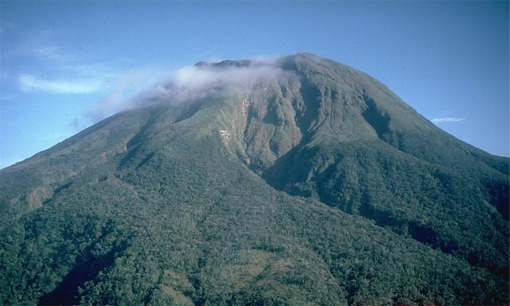Home > Public Advisory > Thunderstorm
Volcano Advisory

This serves as notice for the lowering of the alert status of Bulusan Volcano from Alert Level 1 (abnormal) to Alert Level 0 (normal).
Bulusan Volcano has returned to normalcy following a general decline in monitoring parameters. This is supported by the following observations:
- Volcanic Earthquake Activity: The frequency of volcanic earthquakes has declined to baseline levels (0-2 earthquakes/day) since late September 2020. This indicates that rock fracturing within the volcanic system associated with hydrothermal activity has diminished.
- Ground Deformation: Ground deformation data from continuous GPS measurements indicate slight deflation on the edifice since July 2020, while the long-term trend since May 2019 denotes that the edifice is still deflated. The overall ground deformation data indicate that there is no pressurization from subsurface magma.
- Gas Emission: Sulfur dioxide emission or SO2 flux from Bulusan based on gas spectrometry remains below detection levels since 2018. The relatively low levels of SO2 flux indicate depletion of gas supplied from the active shallow hydrothermal system, although an increase of ambient carbon dioxide or CO2 concentration in monitored springs relative to August 2020 suggests that degassing from the deeper magmatic source continues.
- Visual Observation of the Summit: Surface activity from the active vents has been characterized by very weak to weak emission of steam-laden plumes consistent with diminished hydrothermal activity.
In view of the above, PHIVOLCS-DOST is now lowering the alert status of Bulusan from Alert Level 1 to Alert Level 0. This means observational parameters have returned to baseline or background levels and no magmatic eruption is foreseen in the immediate future. However, in the event of a renewed increase in any one or combination of the above monitoring parameters, the alert status may step up once again to Alert Level 1.
The local government units and the public, however, are reminded that entry into the 4-kilometer radius Permanent Danger Zone (PDZ), particularly near the vents on the south-southeastern slopes, should be avoided due to the possibility of sudden and hazardous steam-driven or phreatic eruption, rockfall and landslide. Civil aviation authorities must also advise pilots to avoid flying close to the volcano’s summit as ash from any sudden phreatic eruption can be hazardous to aircraft. Furthermore, people living within valleys and along river/stream channels should be vigilant against sediment-laden stream flows and lahars in the event of heavy and prolonged rainfall. DOST-PHIVOLCS is closely monitoring Bulusan Volcano’s condition and any new development will be relayed to all concerned.
This will be the last bulletin for Bulusan Volcano until new developments in monitoring parameters occur.

